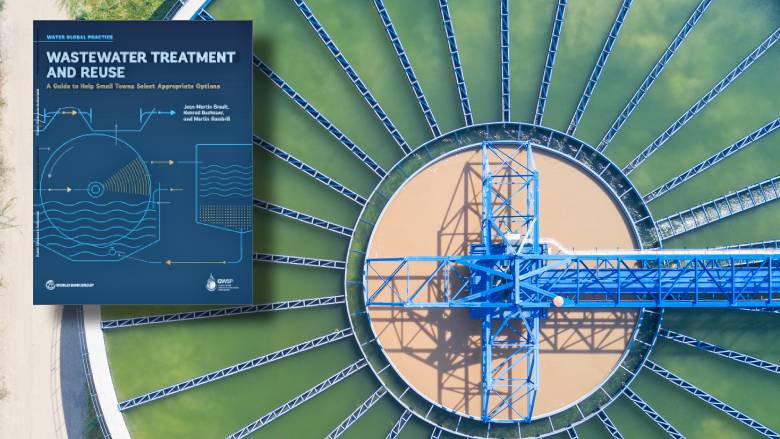Cost-efficient Solutions for Large-Scale Waste Water Treatment Facilities
Cost-efficient Solutions for Large-Scale Waste Water Treatment Facilities
Blog Article
Strategic Approaches to Boost Waste Water Therapy Effectiveness and Minimize Environmental Impact
In the world of drainage treatment, the pursuit for enhanced performance and lowered environmental impact is a continuous obstacle that requires strategic solutions. As society comes to grips with the essential to handle water resources sustainably, a nuanced method becomes necessary. The combination of sophisticated therapy technologies, energy-efficient processes, resource healing approaches, enhanced nutrient removal techniques, and smart tracking and control systems stands for a complex framework for attending to these pushing concerns. However, what exists at the core of this facility web of methods is the potential to change the way we approach drainage therapy, not equally as a procedure of disposal, however as a beneficial possibility for development and environmental stewardship.
Advanced Treatment Technologies
Advanced membrane filtration systems have reinvented advanced wastewater therapy procedures, substantially enhancing the elimination of contaminants. These innovative systems work by forcing water via a semi-permeable membrane, effectively separating impurities from the water stream. The membrane layer's microscopic pores catch contaminants such as bacteria, infections, and suspended solids, enabling only cleansed water to go through. This innovation has verified to be highly reliable in eliminating a variety of impurities, including pharmaceuticals, hefty metals, and natural compounds, which are typically challenging to get rid of via standard treatment techniques.
Furthermore, membrane filtering systems supply many advantages over traditional therapy approaches. They call for much less room, generate higher-quality effluent, and are extra immune to fluctuations in influent water quality. In addition, these systems are very versatile and can be quickly integrated into existing treatment plants or made use of as standalone systems for decentralized applications. As the demand for tidy water remains to increase, the adoption of sophisticated membrane purification modern technologies is necessary to make sure efficient and sustainable wastewater therapy methods.
Energy-Efficient Processes
The assimilation of energy-efficient procedures in wastewater treatment systems is essential for optimizing resource application and lowering functional expenses. One essential method to improving power performance in wastewater treatment is the usage of sophisticated aeration systems, such as fine bubble diffusers or surface area aerators, which can enhance oxygen transfer efficiency and minimize energy intake.
Moreover, maximizing procedure control and automation with the use of sophisticated sensors and keeping an eye on systems can improve overall energy performance by changing operations in real-time based upon real need and conditions. Implementing energy audits and regularly monitoring power efficiency indications are essential techniques to recognize areas for improvement and track energy-saving initiatives efficiently. In general, the fostering of energy-efficient procedures in wastewater therapy not just benefits the atmosphere yet likewise adds to lasting price financial savings and operational sustainability.
Source Recovery Methods
With a focus on optimizing resource use and sustainability in wastewater therapy systems, the execution of source recovery approaches arises as a crucial element in improving operational effectiveness. Resource healing techniques in wastewater therapy entail the identification and extraction of useful resources from the waste stream, therefore turning what was once considered waste right into a useful possession. By executing source healing techniques such as nutrient removal and recovery, power generation from natural matter, and the manufacturing of multiple-use water, wastewater treatment plants can decrease environmental impact while making the most of performance.

Improved Nutrient Elimination Strategies
Executing advanced nutrient elimination techniques is crucial for enhancing the performance of wastewater therapy systems. Enhanced nutrient removal plays a vital function in minimizing the ecological impact of treated effluent released right into water bodies. Among the crucial techniques made use of for improved nutrient elimination is the procedure of biological nutrient elimination (BNR), visit this site which includes the removal of nitrogen and phosphorus via biological procedures. This can be accomplished with making use of specialized microbes that can transform nitrogen substances right into inert nitrogen gas with denitrification, and build up phosphorus within their cells with a process called improved organic phosphorus elimination (EBPR)

In addition to BNR, advanced therapy methods such as membrane bioreactors (MBRs) and created marshes can likewise be used to enhance nutrient removal performance. By integrating these advanced nutrient elimination methods right into wastewater therapy markets, systems and municipalities can efficiently minimize nutrient pollution and shield the setting.
Smart Surveillance and Control Systems
Utilizing cutting-edge technology, the combination of wise monitoring and control systems changes the operational performance of wastewater therapy centers. These systems integrate sophisticated sensors and information analytics to constantly keep track of vital parameters such as pH degrees, turbidity, liquified oxygen, and circulation rates in real-time. By collecting and assessing this data, drivers can acquire important insights into the performance of the therapy procedures, allowing positive changes to maximize therapy effectiveness.
Smart monitoring and control systems additionally sustain remote tracking capacities, enabling drivers to accessibility real-time data and control functions from off-site locations. This remote accessibility improves operational flexibility and responsiveness, making it possible for speedy treatments in situation of system breakdowns or changes in influent top quality. Furthermore, the predictive maintenance capacities of these systems assist prevent tools failings and decrease downtime, eventually boosting the total dependability of wastewater therapy operations (Waste Water Treatment).
Conclusion
To conclude, tactical techniques such as innovative treatment innovations, energy-efficient processes, resource healing methods, enhanced nutrient removal techniques, and smart surveillance and control systems play a critical role in enhancing wastewater treatment effectiveness and minimizing environmental impact. By executing these strategies, wastewater therapy plants can improve their total performance, decrease energy usage, recover important sources, and guarantee compliance with ecological guidelines. These strategies are necessary for lasting and efficient wastewater administration techniques.

In conclusion, calculated methods such as sophisticated therapy innovations, energy-efficient procedures, resource recovery approaches, enhanced nutrient elimination methods, and wise monitoring and control systems play a critical function in enhancing wastewater therapy efficiency and decreasing environmental effect.
Report this page